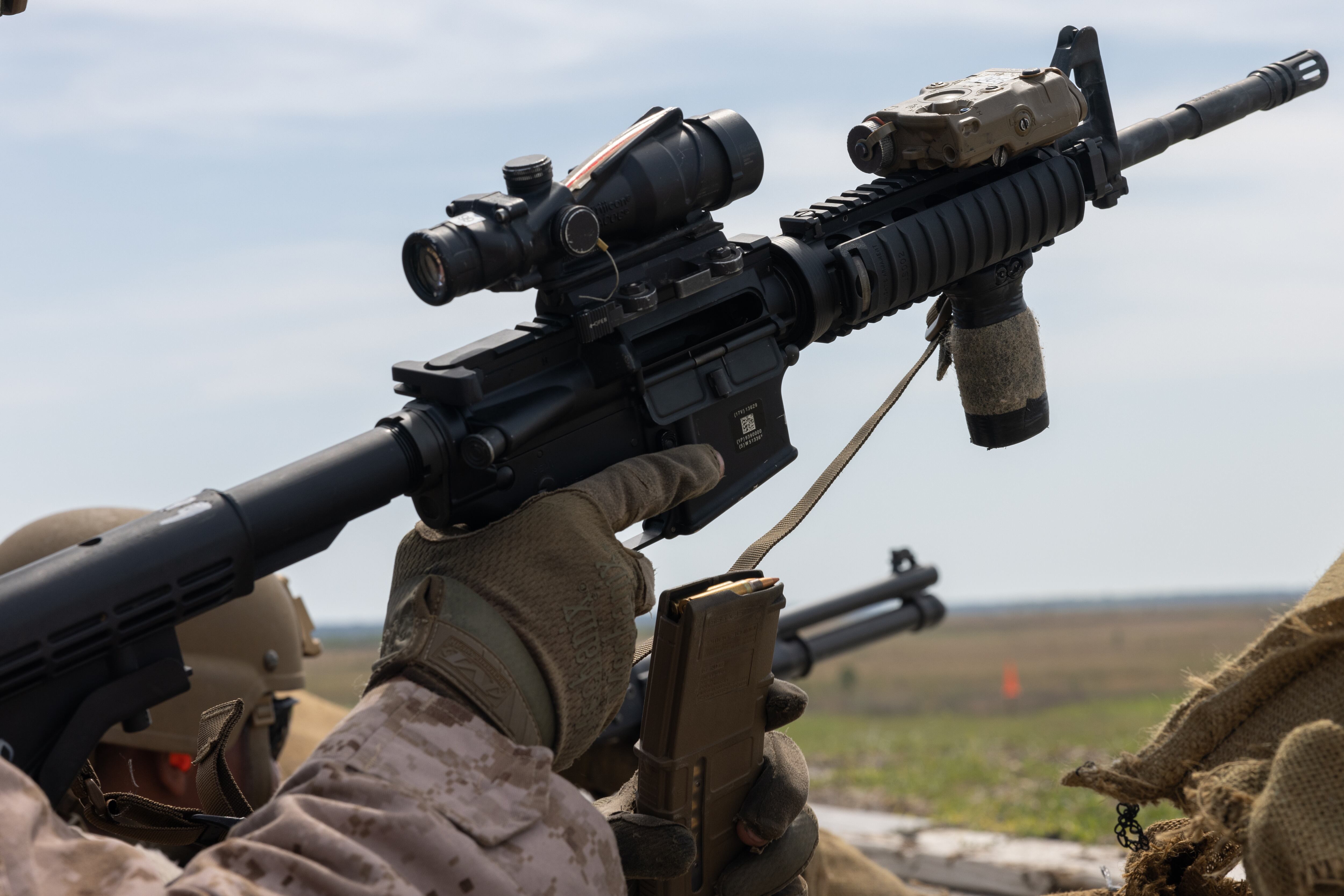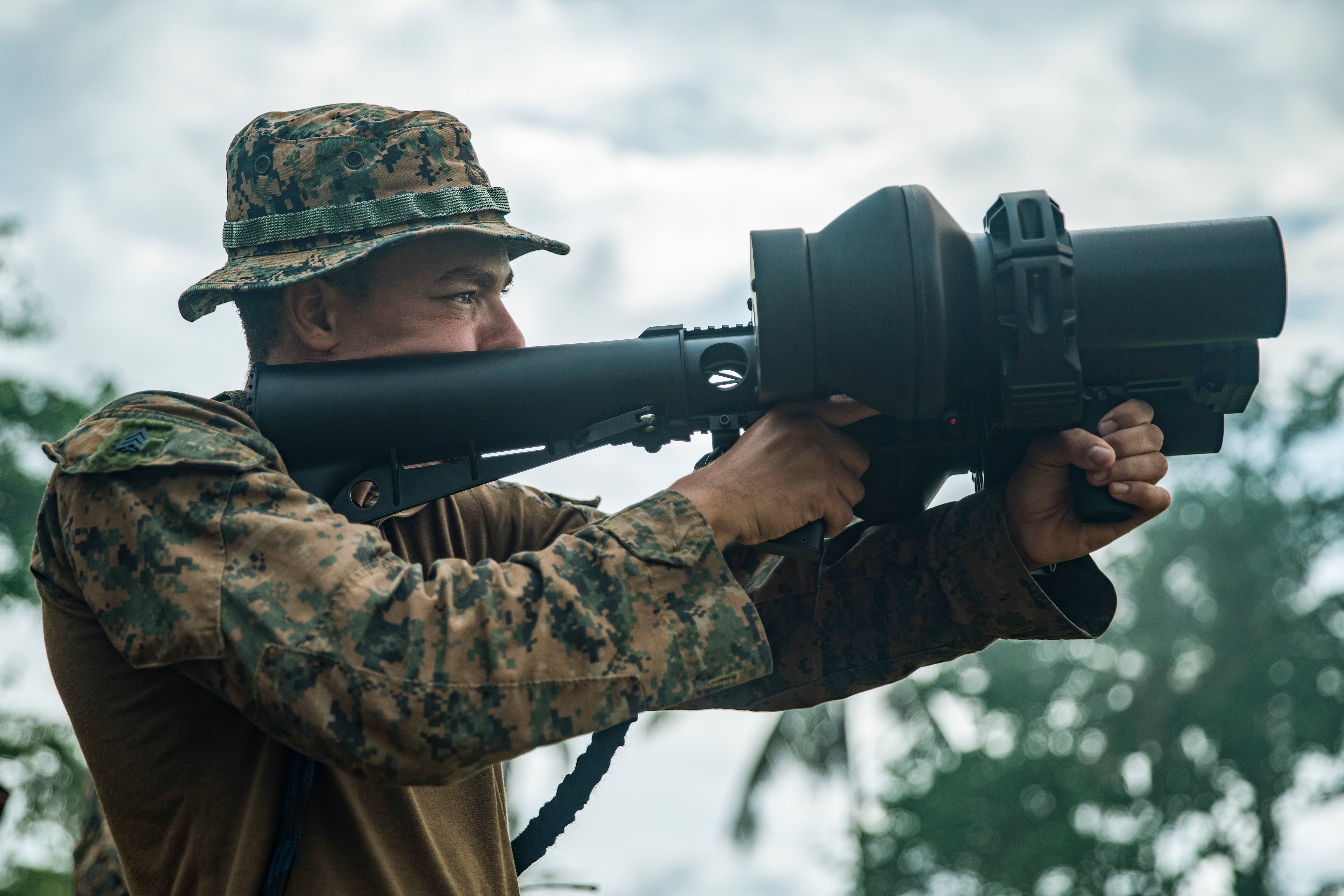NATIONAL HARBOR, Md. — Deploying dismounted Marine units will soon field handheld counter-drone system prototypes as the service also bulks up their drone protection on fixed bases.
Those systems, paired with an increased emphasis on air defense training for all Marines, are part of how the Corps is getting after the drone threat.
The announcement came Tuesday at the Navy League’s annual Sea, Air and Space Exposition during a panel on Marine Corps modernization.
“It has been a long time, maybe since World War II, since a member of an infantry squad on the ground actually had to look up or over his shoulder do anything other than clear an aircraft hot, or call in a medevac or something like that,” said Lt. Gen. Benjamin Watson, head of Training and Education Command.
RELATED

The Marine Corps provided few details about the prototypes, citing security concerns.
“As a matter of operational security, the exact technologies will not be discussed, but the interim solution fielded will allow Marines to detect, track, identify, and kinetically and non-kinetically defeat adversary [small unmanned aircraft systems] in a dismounted formation,” according to a release.
Watson noted that in the Cold War era, Marines commonly trained in defending small units from air attack. That was less necessary during the era of complete air superiority that troops experienced in recent wars.
A return to cover, concealment and camouflage focus is also part of the initiative, Watson said.
“We may never fight again with the air superiority in the way we have traditionally come to appreciate it,” Watson said.
The protection isn’t just for the infantry, either.
“One of the things that is apparent to all of us is that unmanned aerial systems are a threat not just to infantry Marines, but to all Marines,” said Lt. Gen. Eric Austin, head of Combat Development Command.
Those deploying units are likely going to be the Marine Expeditionary Units and Marine Littoral Regiments, a Marine official told Marine Corps Times.
The handheld dismounted prototypes are for defeating small drone threats, which thwart small, dismounted units. The Corps also has a larger ground-based air defense program known as GBAD, which works against larger threats, such as missiles and mortars.
“Current Ground Based Air Defense (GBAD) capabilities that are being fielded today predominantly focus on mounted platforms organic to the Low Altitude Air Defense Battalions (LAAD Bn) and the Littoral Anti-Air Battalions (LAAB), which encompass the entire air defense continuum up to and including defeating manned aircraft and cruise missile threats,” according to a Marine release. “Those dedicated air defense assets are not always practical or available at scale to support individual unit operations.”
The selection came after a year-long review process and a fly-off, which pitted various systems against each other in September, officials said.
In March, the Corps awarded a $642 million, 10-year contract to Anduril to provide installation-based, counter-drone equipment to protect Marine bases and fixed sites.
The same company received a $200 million contract to develop the Marine Air Defense Integrated System in November. The MADIS and L-MADIS, a light version, are key to protecting disparate, disaggregated units from a range of airborne threats.
Todd South has written about crime, courts, government and the military for multiple publications since 2004 and was named a 2014 Pulitzer finalist for a co-written project on witness intimidation. Todd is a Marine veteran of the Iraq War.





